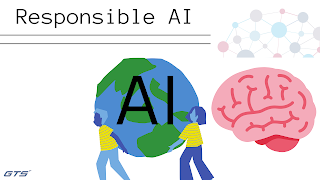Responsible AI Through Various AI Dataset
Seth's professional path has naturally taken him into the discipline of responsible AI which is one of the key elements to get AI implemented on a broad size. A geneticist in training, Seth started his AI journey at the graduate level working in various startups as well as in academic settings ever until he joined IBM in the early years of the decade. The role he held at IBM was to lead corporate transformation projects using the power of AI Training Datasets as well as AI.
He was able to observe first-hand the biggest hurdles to conducting digital transformation in companies is trust and acceptance of AI by those who will be using them and individuals who will be affected by the use of them. When faced with the implementation of a new technology, the most frequent concerns he observed being asked are: Is the software providing the right answers? Are I aware of how it functions? Does the tool have bias? Does the tool appear to be transparent?
The Six Obstacles to Data Annotation Workflows
Annotation of data is a process that includes many moving parts which means that there are many areas of risk. The most commonly encountered obstacles that can be encountered in a data annotation workflow are the following:
- Interoperability between tools when using different third-party and in-house tools could cause issues with tools communicating with each other.
- The fragmentation in reporting usually occurs as an outcome of interoperability issues. If systems don't communicate with one another, you don't know what's going on at a macro scale.
- Edge instances These are the anomalies that occur in the data are within the gray areas of annotation guidelines
- Skills for the workforce and scale for high-quality data like Audio Datasets, annotators must have proficiency, expertise in the domain and the capacity to improve their skills as the project advances. Scaling can also pose huge problems in that moving from 10-15 annotators to 2000 requires an essassy framework.
- Controlling data security The supporting technology infrastructure should be able to be able to support encryption, isolation, and consistent compliance with regulatory requirements.
- Access to real-time information but without visibility in real-time, entire groups of data that have not been identified as having issues might need to be redone in full
The Path of AI Certifications
Validating responsible AI with industry-standard accreditations, like we do in many other industries will make the use of AI models much more easy in terms of acceptance and confidence. In line with industry-standard certifications like ISO, IEEE, and NIST These independent tests are a way to confirm that an AI system is in line to these standards.
The assessments may be in three kinds:
- Self-assessments are similar to the way SOC2 is performed An internal team will carry an audit to confirm the compliance with this standard.
- 2nd party audits - A external party that is not accredited can verify internal assessments against the standards for certifications
- Third party audits: An external assessor accredited by the governing body can confirm that assessment has been confirmed
Human-Centered AI
AI is, at its heart must be developed and used to address human problems. Humans are required to be present during the entire life cycle of AI. It is crucial to know who will be using it, who's going be affected by it by it, and if it will be employed to automate humans or enhance human.
When an AI system has to take an important decision that affects human health, wealth , or well-being human beings must be part of the loop. For instance mortgage underwriters must consider the AI system's inputs however, they should be the one to make making the ultimate decision. In industries that are regulated where a human agent decides to make a decision and is asked to explain the reason for the decision. If an AI makes a choice the human-in-the loop would need to verify upfront the reasons why the AI made the decision, shifting this verification step into the process of decision making.
Biggest Case for Spending on Responsible AI
Seth recommends that the effectiveness in an AI project can be evaluated by:
- Money generation
- Saving money
- Enhancing satisfaction by engaging
The Boston Consulting Group published the study and asked whether businesses that use AI have better business results by implementing responsible AI. In comparing this metric between laggards as well as leaders, they have always stated that responsible AI yields better business results.
For engineers to be responsible AI is an essential element to ensure that their AI systems implemented in real-world situations. If the AI system can be proven as transparent impartial and secure and reliable, it is likely to face little opposition in the process of acceptance.
In the same way, responsible AI is more likely to comply with compliance rules. Particularly in sectors like government, finance as well as healthcare, an uncompliant AI system could have to be shut down, or require to be revamped.

Comments
Post a Comment